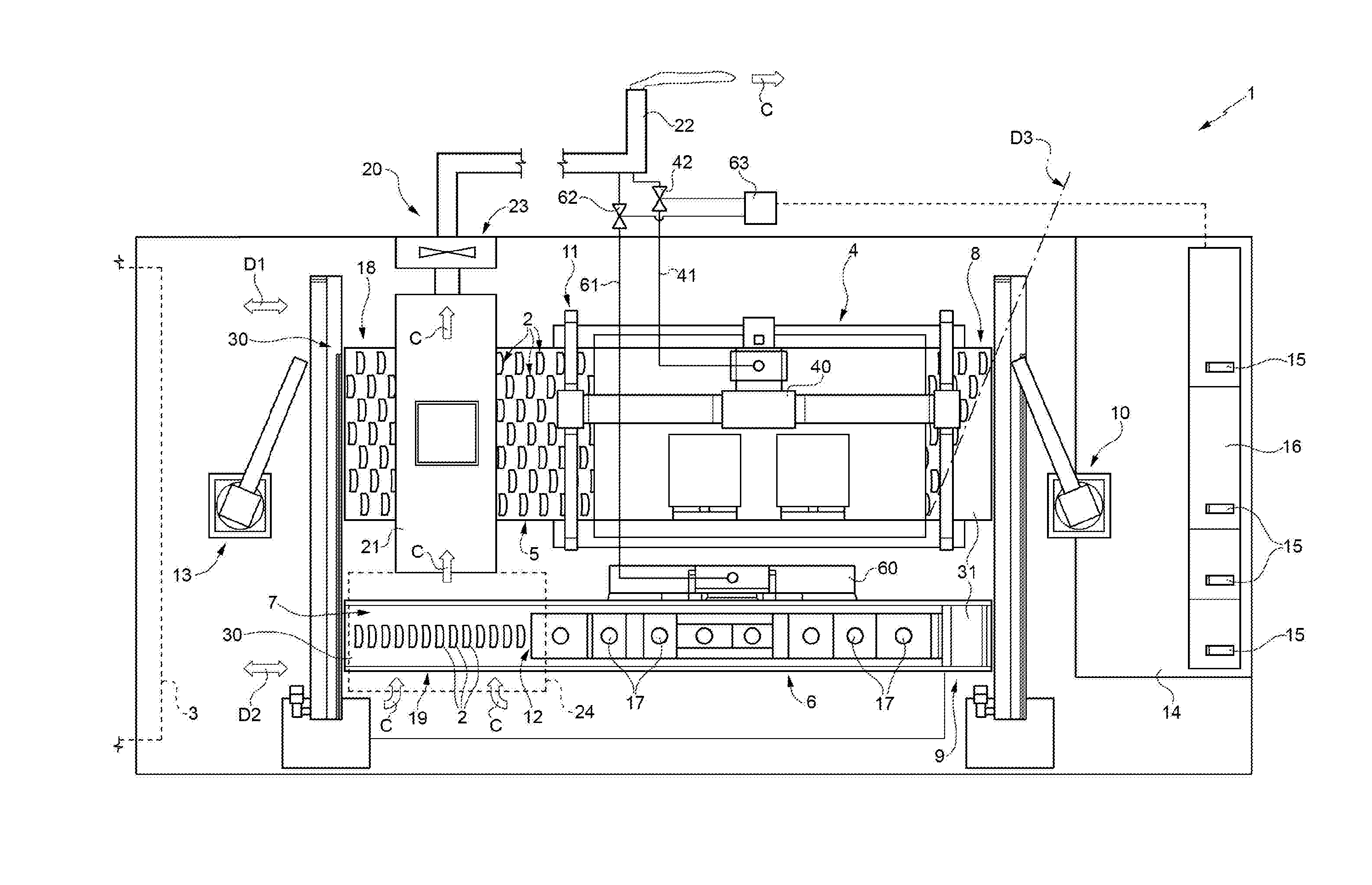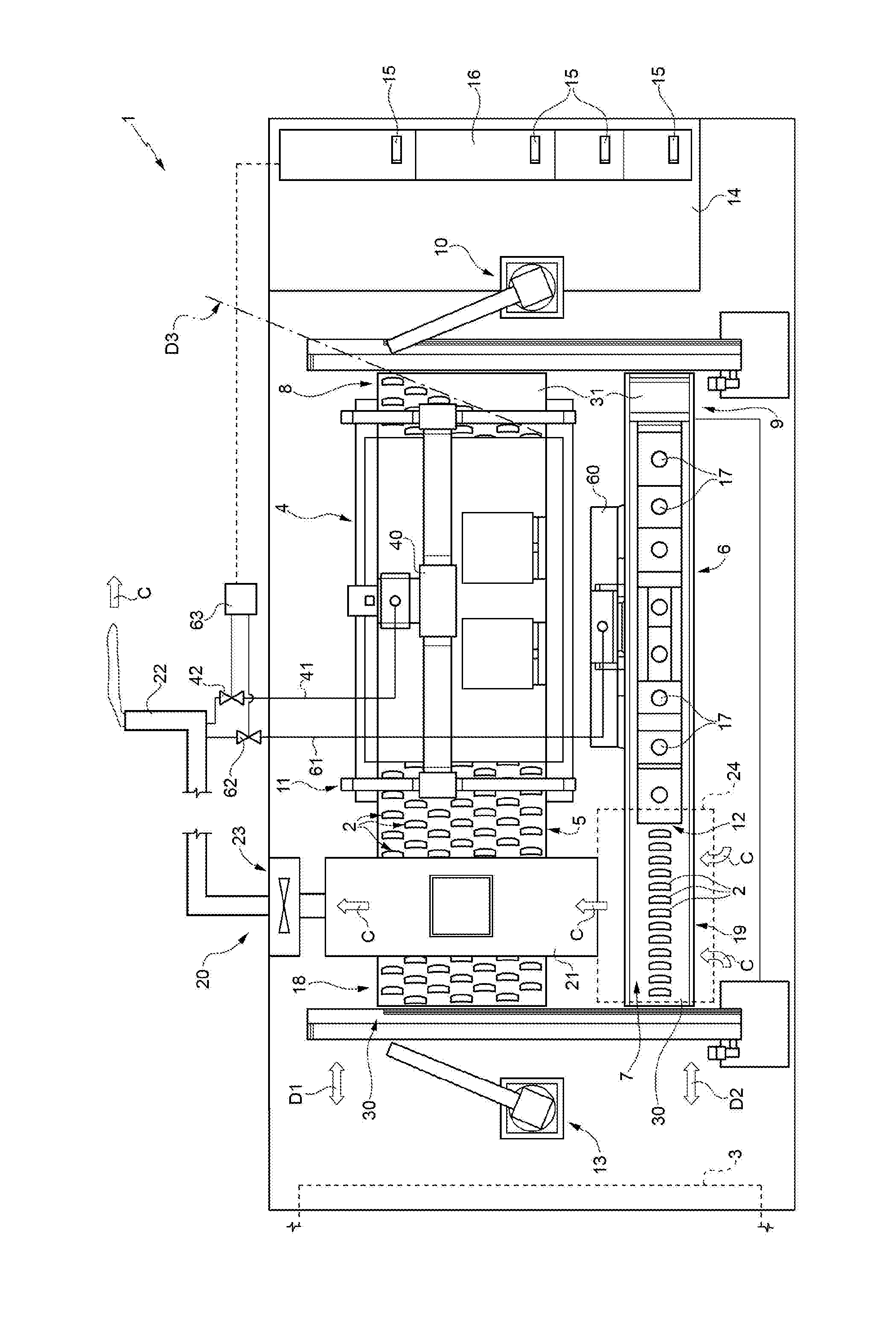A method and plant for carrying out thermal treatments of braking elements, in particular brake pads
a technology for braking elements and thermal treatments, which is applied in the direction of furnace components, lighting and heating apparatus, electric heating for furnaces, etc., can solve the problems of reducing the overall productivity of the plant, standard thermal treatment processes employed today do not feature sufficient flexibility, etc., and achieve the effect of reducing the dimensions of the plant and the processing duration
- Summary
- Abstract
- Description
- Claims
- Application Information
AI Technical Summary
Benefits of technology
Problems solved by technology
Method used
Image
Examples
Embodiment Construction
[0015]With reference to the single drawing attached, it is indicated as a whole with reference number 1 a plant for the thermal treatment of braking elements 2, in particular brake pads, which are known and illustrated for the sake of simplicity in schematic fashion only.
[0016]The plant 1 is preferably arranged immediately downstream of a station 3, known and indicated schematically with a hatched block, which is designed to carry out a known forming step upon the braking elements 2, comprising the pressing of a block of friction material on a metal support.
[0017]The braking elements 2 exit from the station 3 and from the corresponding forming step and are transferred to plant 1, preferably without allowing them to cool. The plant 1 is designed to expose the braking elements 2 to a combination of two heating processes, a convective heating process and an infrared heating process, immediately following each other.
[0018]To this end the plant 1 comprises in combination: a convection tu...
PUM
| Property | Measurement | Unit |
|---|---|---|
| temperature | aaaaa | aaaaa |
| temperatures | aaaaa | aaaaa |
| angle | aaaaa | aaaaa |
Abstract
Description
Claims
Application Information
 Login to View More
Login to View More - R&D
- Intellectual Property
- Life Sciences
- Materials
- Tech Scout
- Unparalleled Data Quality
- Higher Quality Content
- 60% Fewer Hallucinations
Browse by: Latest US Patents, China's latest patents, Technical Efficacy Thesaurus, Application Domain, Technology Topic, Popular Technical Reports.
© 2025 PatSnap. All rights reserved.Legal|Privacy policy|Modern Slavery Act Transparency Statement|Sitemap|About US| Contact US: help@patsnap.com


